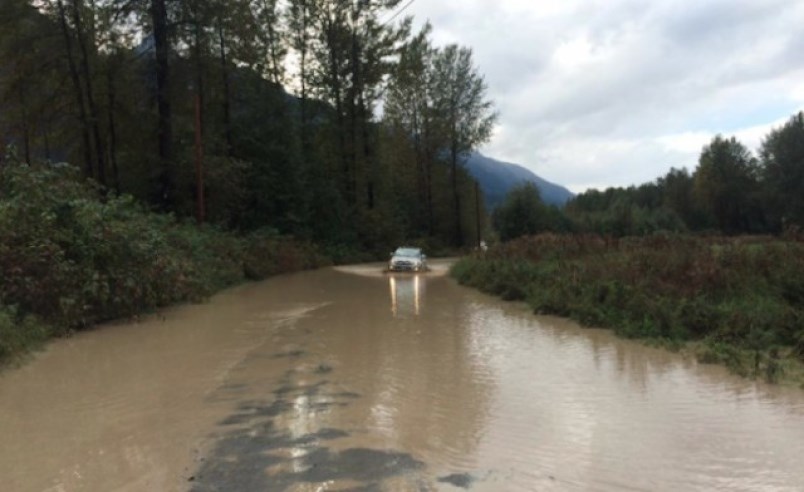The Squamish-Lillooet Regional District has issued a Community Advisory for the Seton Portage area of Lillooet after a risk assessment was completed for the area.
The assessment determined that 59 buildings are at unacceptable level of risk from land movement events, including debris flow and debris floods.
Officials from the Squamish-Lillooet Regional District (SLRD) and Tsal’alh First Nation have received and reviewed the results of the Seton Portage Area Integrated Hydrogeomorphic Risk Assessment, conducted by BGC Engineering Inc. (BGC).
Elected Officials from Tsal’alh and the SLRD met on Mar. 28, of this year to review the draft Assessment with BGC engineers, and the two jurisdictions have agreed to continue joint advocacy in an effort to secure funding for risk mitigation.
The Assessment was prompted after debris flow and debris flood events in 2015 and 2016 raised concerns about the potential risk to the communities on the Seton Portage alluvial fan, which separates Anderson Lake from Seton Lake.
A 2016 geotechnical report prepared for the Ministry of Forests, Lands, Natural Resource Operations and Rural Development identified an increased potential hazard and risk from terrain instability, and recommended that a detailed risk assessment be conducted to better understand the potential size and frequency of future events.
In 2017, the SLRD and Tsal’alh secured funding from Emergency Management BC and Indigenous Services Canada to conduct a comprehensive risk assessment to quantify the hazards, evaluate the risks, and identify potential risk reduction options. The project was overseen by a multi-agency steering committee.
The assessment studied the hydrogeomorphic hazards and risks in the Seton Portage area, including risk to life, buildings, critical facilities, business activities, culturally significant sites, and critical infrastructure such as roads, bridges, railway, power,and communication lines.
For the purposes of the assessment, hydrogeomorphic hazards are defined as hazards stemming from Bear/Pete’s, Whitecap and Spider Creeks and include floods, debris floods, debris flows and bank erosion on the Portage River (also known as the Seton River or Portage Creek).
Additionally, hazards were assessed that could indirectly affect steep creek processes such as deep-seated landslides.
The completed assessment has confirmed the potential for land movements that place 59 buildings below the Bear and Pete’s Creek drainages above the tolerable individual risk threshold criteria used in the Assessment.
Of these buildings, 44 are on land within SLRD Electoral Area B and 15 are on Reserve Lands administered by Tsal’alh.
According to the engineer's analysis, debris flow risks from Bear and Pete’s Creeks are much greater than risks from the other creeks at Seton Portage.
Safety risk from Whitecap Creek was assessed as tolerable, and safety risk on Spider Creek was assessed as acceptable.
Further study of Portage River was recommended.
In a news release, the SLRD said engineered structural mitigation is possible and recommended by the assessment, which identified mitigation on Bear and Pete’s Creeks as being a high priority. However, at an estimated capital cost of $7 million - $8 million, not including annual maintenance costs of the costs of clearing out debris after each debris flow event, obtaining the funding for structural mitigation will be a key area of focus moving forward.
The assessment also recommended a number of non-structural mitigation options, including relocation, community education, emergency management planning, land use restrictions, and temporary evacuations during hazardous conditions such as heavy rainfall events. However, with the exception of relocation out of the area, none of these options would reduce the risks to a tolerable level without structural mitigation.
Officials and staff from the SLRD and Tsal’alh are reviewing the assessment’s recommendations and considering next steps.
Both organizations say they remain committed to ongoing discussions with provincial and Federal agencies and ministries to advocate for the safety of affected property owners and residents in the Seton Portage area.
A Community Information Meeting will be held next Monday, Apr. 16 in Lillooet to share the results of the assessment with community members. The meeting will be held at the Ski’il Mountain Community School
The complete assessment document is available to download from the SLRD website at www.slrd.bc.ca .




